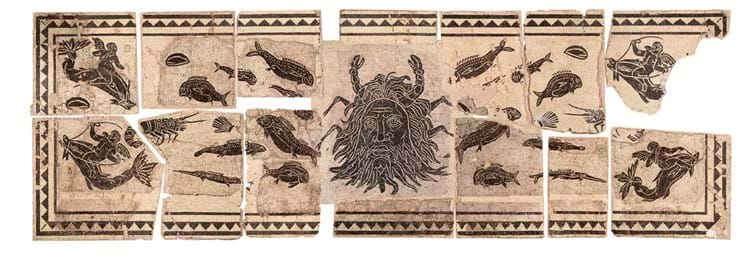
Vienne, on the river Rhone, is famously a city where Roman history abounds. A major centre during the Roman empire, it boasts a fine Roman temple and a pyramid, an amphitheatre and many other remains from the ancient world are buried beneath the ground.
The fragmentary mosaic, in 15 sections measuring around 22 x 7ft (6.8 x 2.2m) in total, has twice been excavated. It was first uncovered in 1845 then dug up again in 1867 at which point it was restored and assembled in a hallway of a modern house constructed on the site of the original building in Vienne where it remained until 1974.
The mosaic stayed in the same family, however, until this year when it was consigned to a sale of antiquities in Monaco held by the Hôtel des Ventes de Monte Carlo as part of their summer series of sales held in the Principality in July.
Marine Decoration
The mosaic is constructed in opus sectile using tesserae of black and white marble and limestone featuring marine decoration (a popular theme popular in Africa and Spain at the time). There is a large central motif of a god of the ocean sporting a full beard and lobster claw ‘horns’ surrounded by fish, shells and crustacea.
At each angle is a winged putto mounted on a dolphin and all is surrounded by geometric borders.
As is often the case with works of this type, there has been a degree of restoration and replacement but Bianca Massard, the auction specialist for this piece, said 70% of the antique elements remain including the central part featuring the ocean god, three of the four putti and major parts of the fish and shells.
It was offered in the Monaco sale with an estimate of €250,000-300,000 but the city of Vienne was keen enough on this piece of their history for its Museum to send their head of conservation to the auction. Exercising the right of pre-emption that allows French institutions to step in and claim a work at the level dictated by the fall of the hammer , the Musées Nationaux were able to secure it for €310,000 (£276,790).





